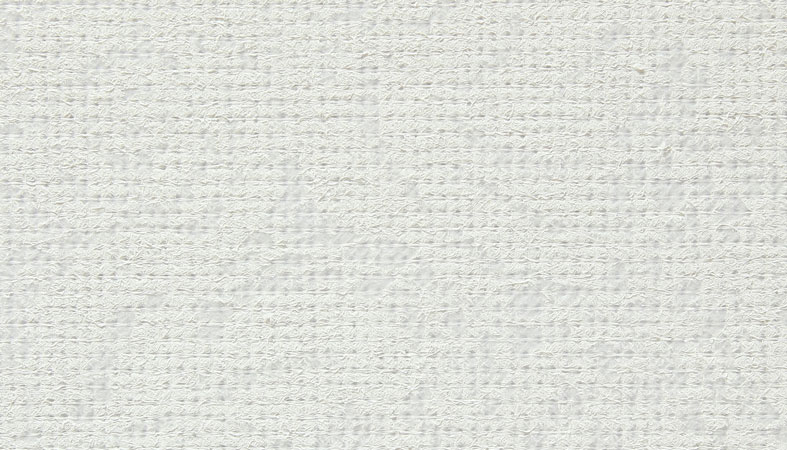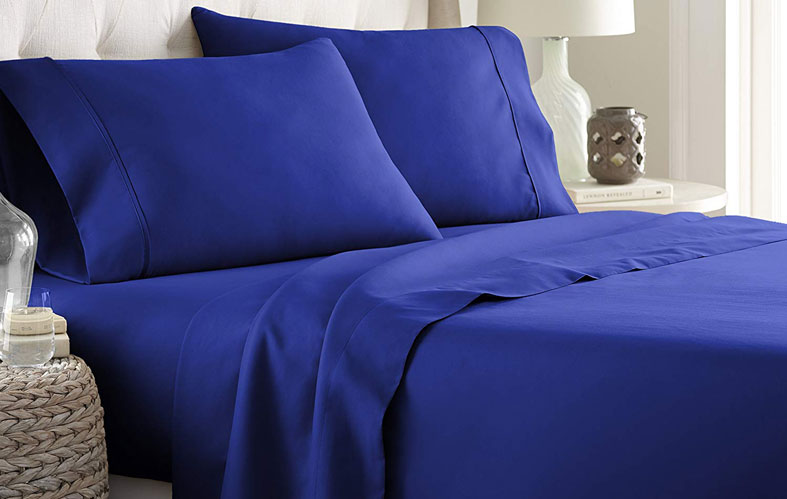If you’ve fallen prey to the thread count myth, you’re not alone.
Companies have been inflating these figures in their sheets for years, tricking consumers into believing that a higher thread count number meant better quality and softer sheets.
In a sea of bed sheets that all looked and felt pretty similar, consumers began relying on this measurement as an indicator of quality and comfort. Bigger tends to mean better, right?
Consider this article a public service announcement so that when you’re shopping for sheets in the future, you’ll know what to look for. You’ll even save money by being able to avoid unscrupulous brands that have inflated their numbers in hopes of tricking you into buying their wares. After reading this, you will be way too smart to fall into their trap!
What is Thread Count?
It is a measure of how many threads are woven into one square inch of fabric. The yarn is woven in a crisscross pattern with the vertical strands being referred to as warp weave, and the horizontal pieces are called weft weave.
When you add up the warp and weft yarns, you get the total number.
In general, look for sheets that have a range between 200 and 400. Anything less will feel similar to sandpaper. Anything higher is going to have a steeper price tag with questionable quality.
Does It Matter?
Yes, it does matter, but it’s not the only factor you should consider. It’s one of many features of the product. Think of it like buying clothes. A suit manufacturer might list this on the label, too, but you should also be evaluating other things like the quality of the yarn, the type of material used, how it feels overall, and how and where it was sourced, for example.
When looking at the number of threads, think of it this way: an ultra-low figure means the fabric is woven loosely together and there could be holes or roughness. It could also be an indicator of overly thick yarn that doesn’t feel soft. So, yes, you still need to look at the overall measurement but be wary of figures that seem inflated.
Like we mentioned a moment ago, anything over 400 means that there was trickery involved in calculating that number. We’ll get to how these companies have engaged in creative math in a moment.
How Does the Ply Affect the Thread Count?
The ply is a measure of the number of layers. You’ve heard of two-ply toilet paper, right? That means that two layers of material are combined to form a thicker layer.
The same principle applies to sheets. There are single ply varieties, and there are also brands that combine two or three strands into one single yarn. Depending on the thickness of the original threading, the feel of the finished product will vary.
When it comes to quality, this where a brand can and will inflate their figures. If they weave two strands of yarn together into a two-ply construction, then in essence, they can double the count. Now imagine that they’re using three-ply thread. The supposed amount of threads would then triple.
As you can imagine, this isn’t necessarily an indicator of quality. In fact, many companies end up weaving multiple pieces together when the original source of the material isn’t strong enough to stand up on its own. They reinforce it by combining pieces of yarn!
Does Higher Thread Count Mean Better Quality?
As you have gathered by now, the answer to this is not black and white. While you should be looking for a range to indicate quality, higher doesn’t always mean better.
Frequently Asked Questions
How does one calculate thread count?
This number is calculated by counting the number of threads in a square inch of fabric. Both the horizontal and vertical strands are counted. In addition, if they’re woven together into multiple plies, then those are counted as well.
What is the highest thread count of sheets possible?
The highest number you’ll likely see on a package is 1,600 to 2,000. We’ve seen mixed reviews on bedding with these inflated numbers, so we encourage you not to believe the hype.
How can it be used to determine the softness of sheets?
We recommend using it as a guide and quality check for your bed sheets. You should be looking for a range from 200 to 400. If the number is between 150 and 180, then the sheets are going to be rough and not at all soft. A number over 400 means that the fibers are likely woven together to get an inflated figure. The overlapping and extra weaving could also mean that the fabric will be rougher.
What is the best thread count for Egyptian cotton sheets?
Egyptian cotton is some of the best material available. The fibers, also known as staples, are longer and more durable than most other cotton yarn. At one time, this fabric was only available in Egypt, but now it can be found worldwide.
The same principles apply to Egyptian cotton as regular cotton. The general range of 200 to 400 is what to look for, though counts in the range of 300 to 360 will likely be the softest.
Conclusion
Buying bedding is a big decision. After all, your bedding comes in contact with your skin for several hours a day! No matter how perfect your mattress is, scratchy, rough, and uncomfortable sheets can turn a blissful night of sleep into endless hours of tossing and turning.
Now that you’ve become acquainted with how to choose the right sheet based on the numbers on the label, you’re one step closer to finding a set of sheets that you’ll enjoy for years to come.
Jill Zwarensteyn
Editor
About Author
Jill Zwarensteyn is the Editor for Sleep Advisor and a Certified Sleep Science Coach. She is enthusiastic about providing helpful and engaging information on all things sleep and wellness.
Combination Sleeper

